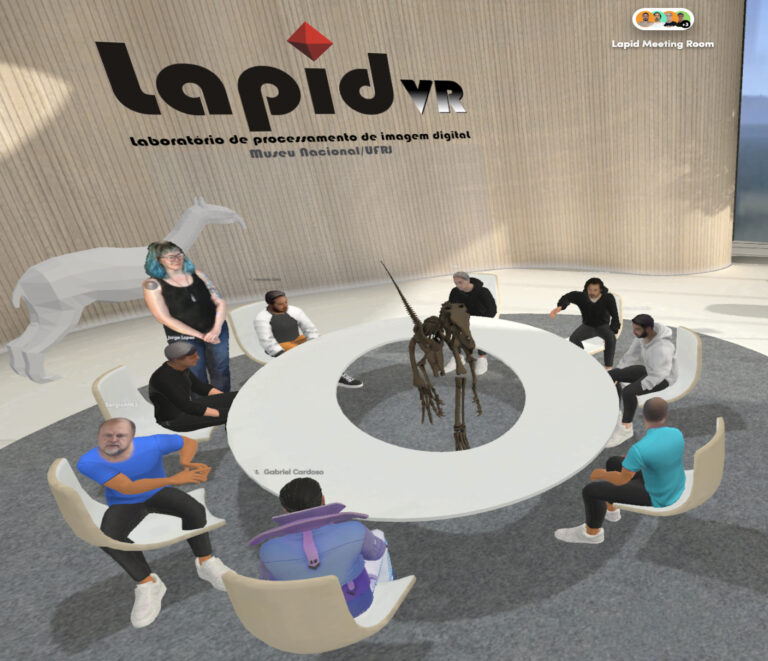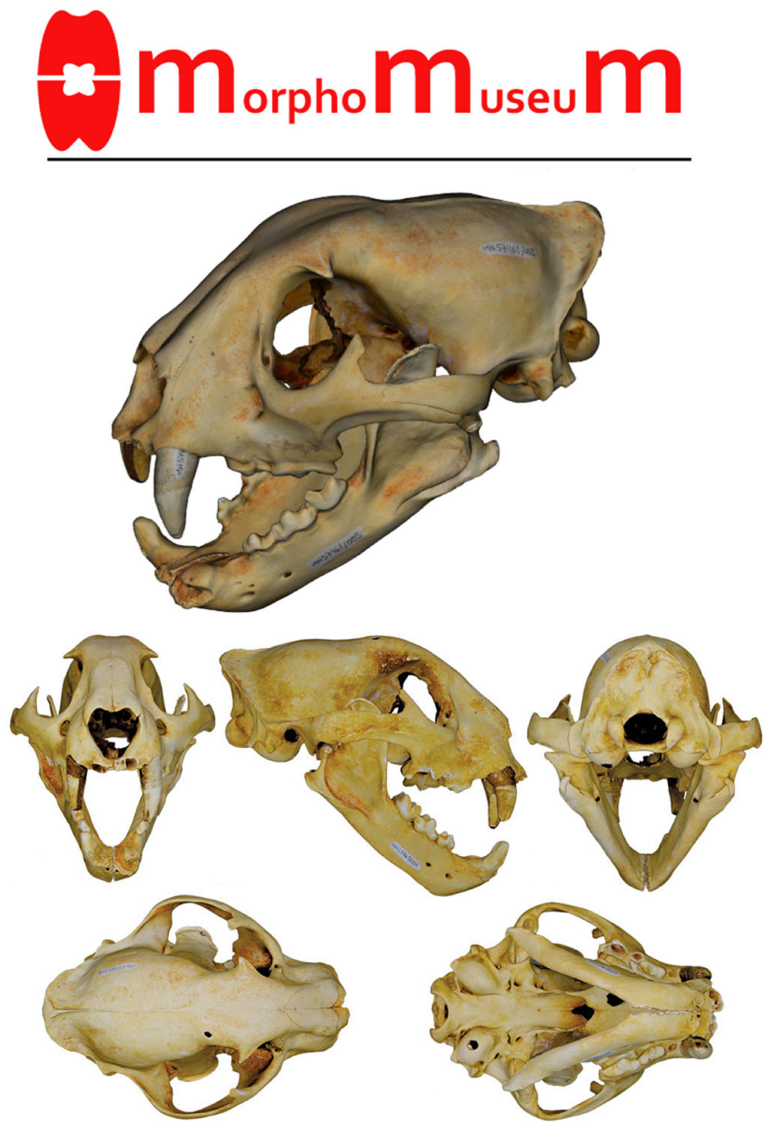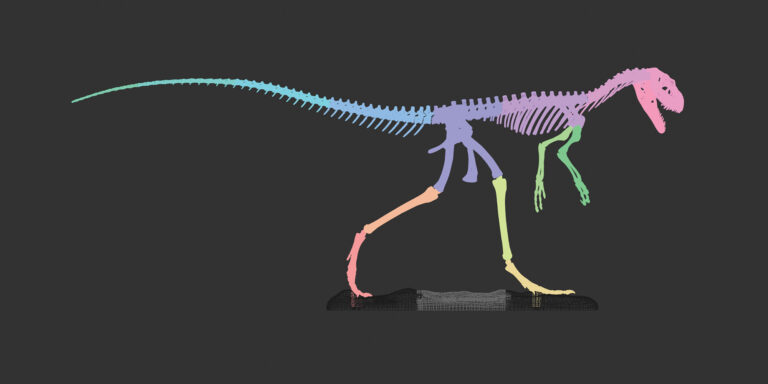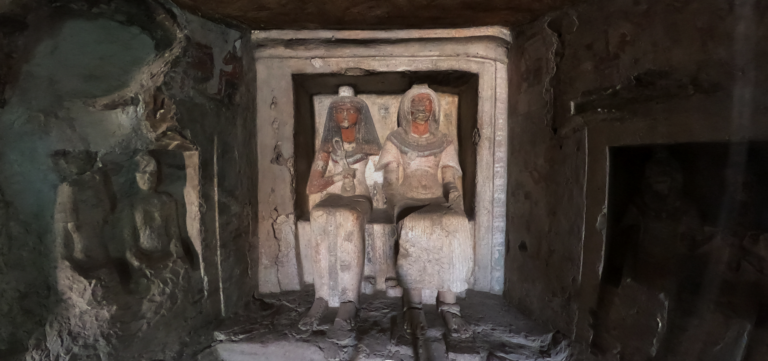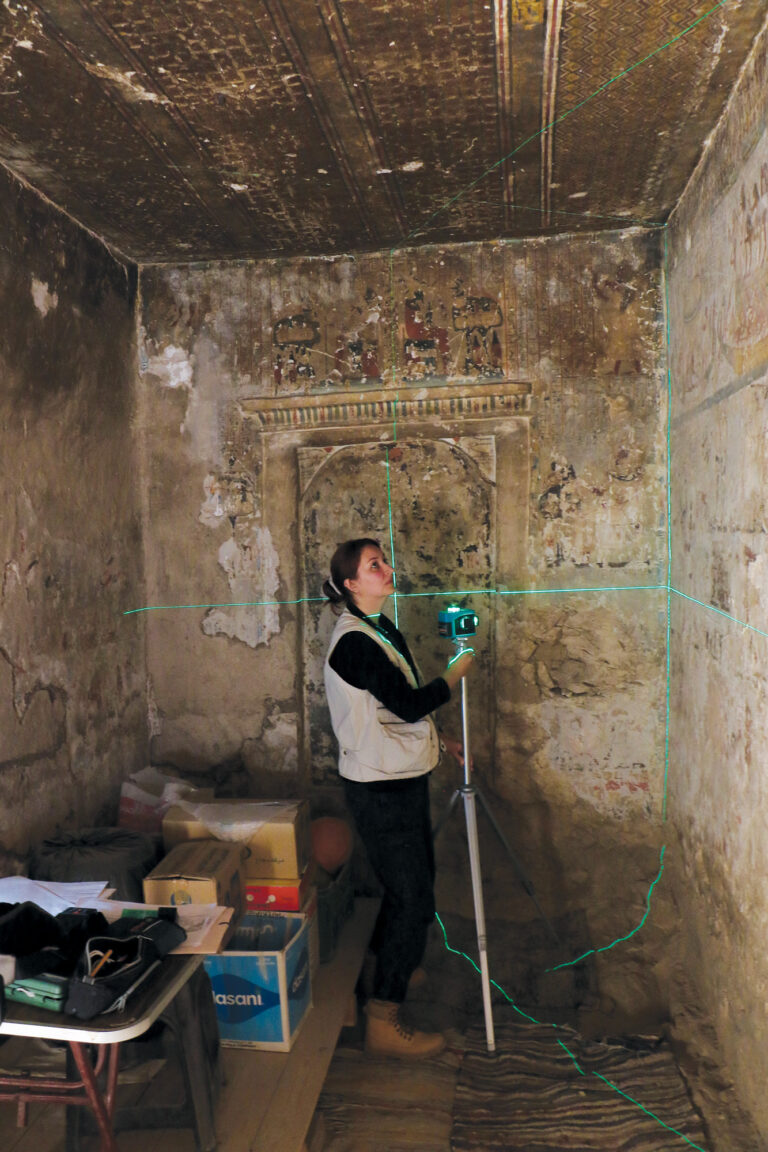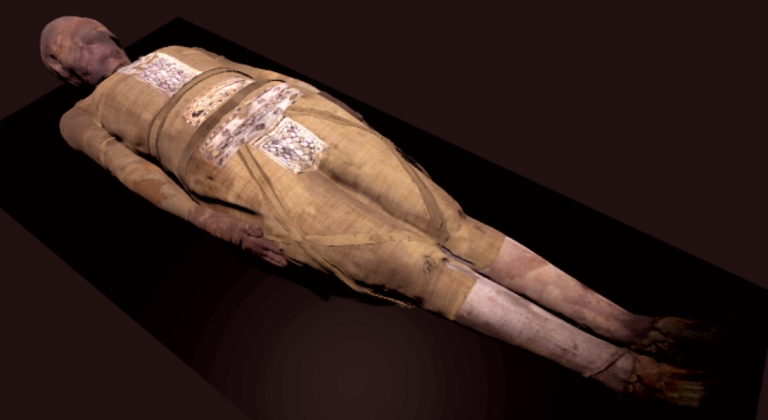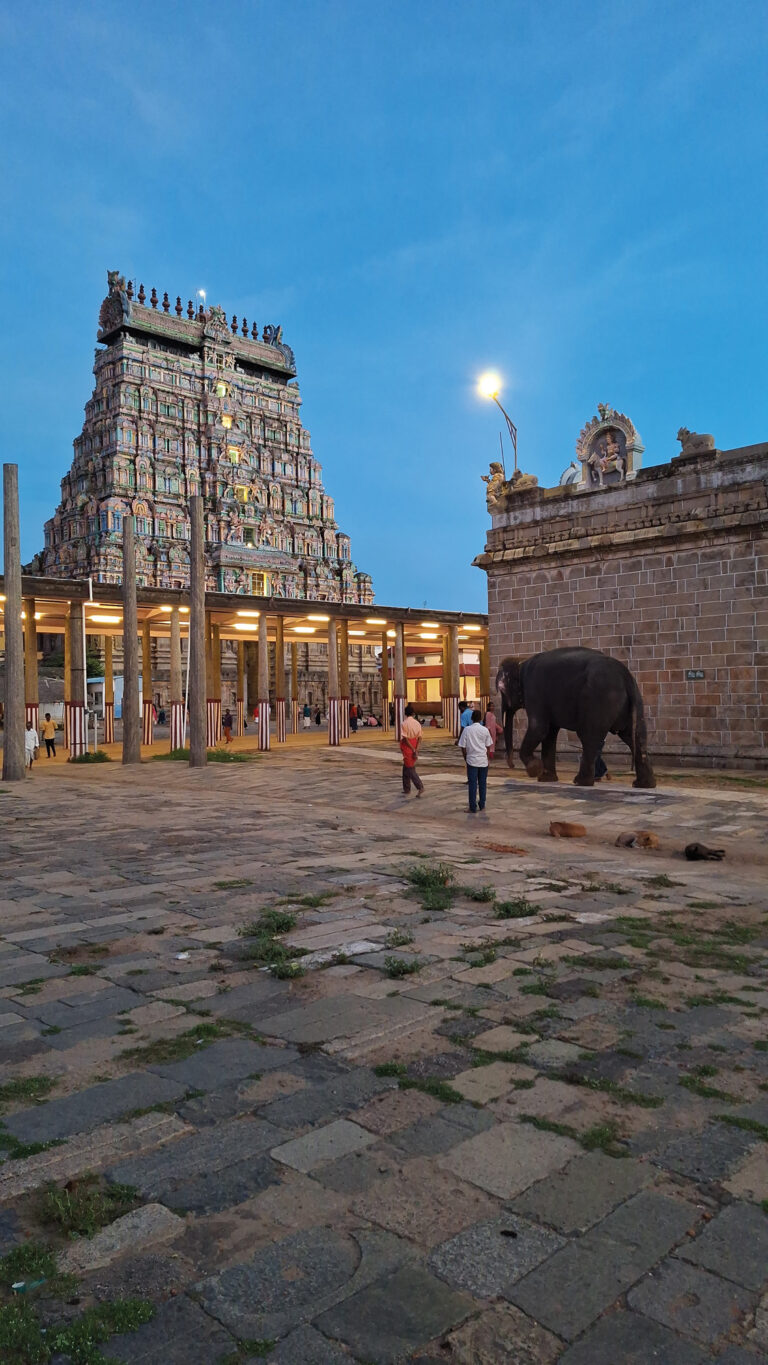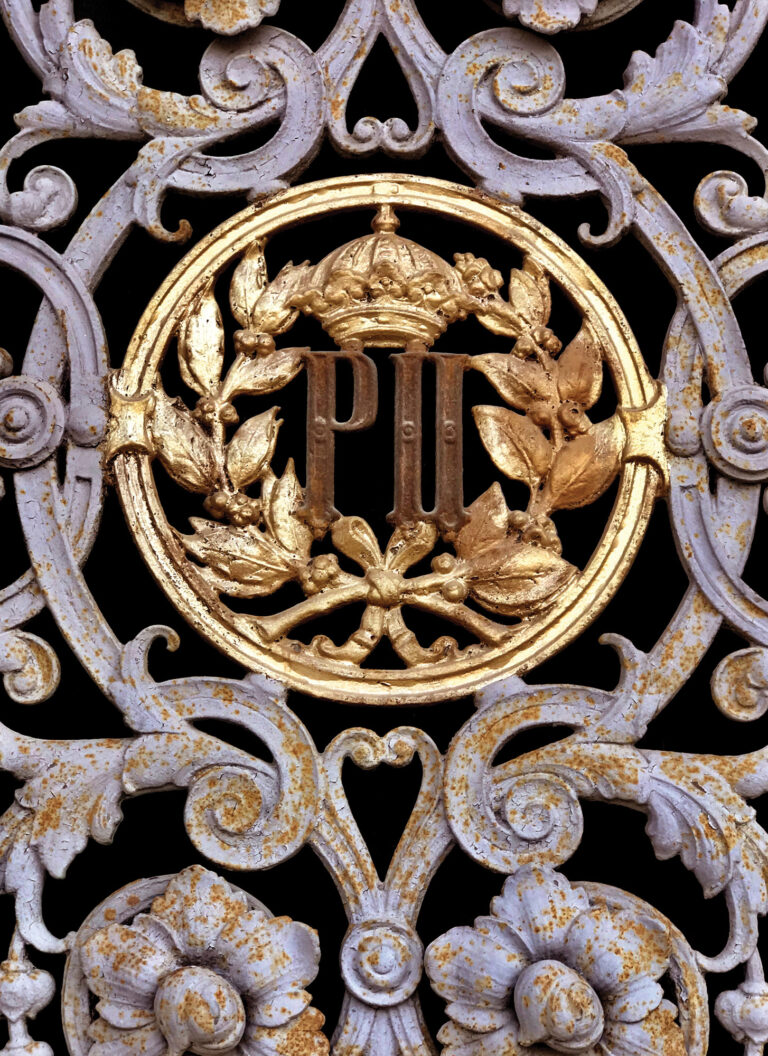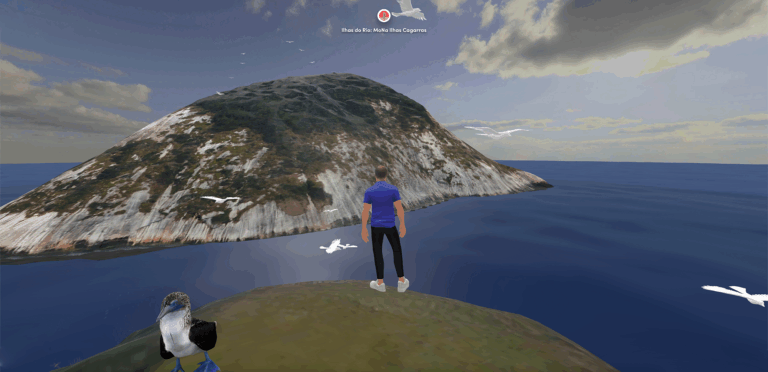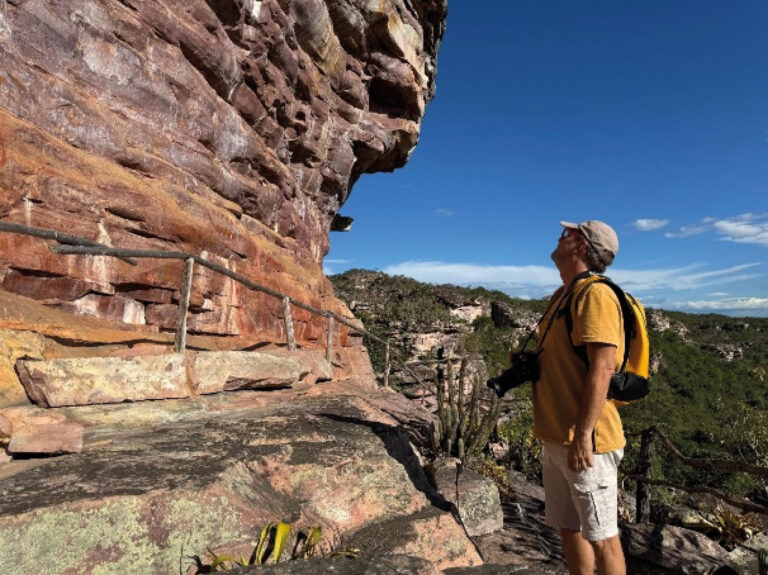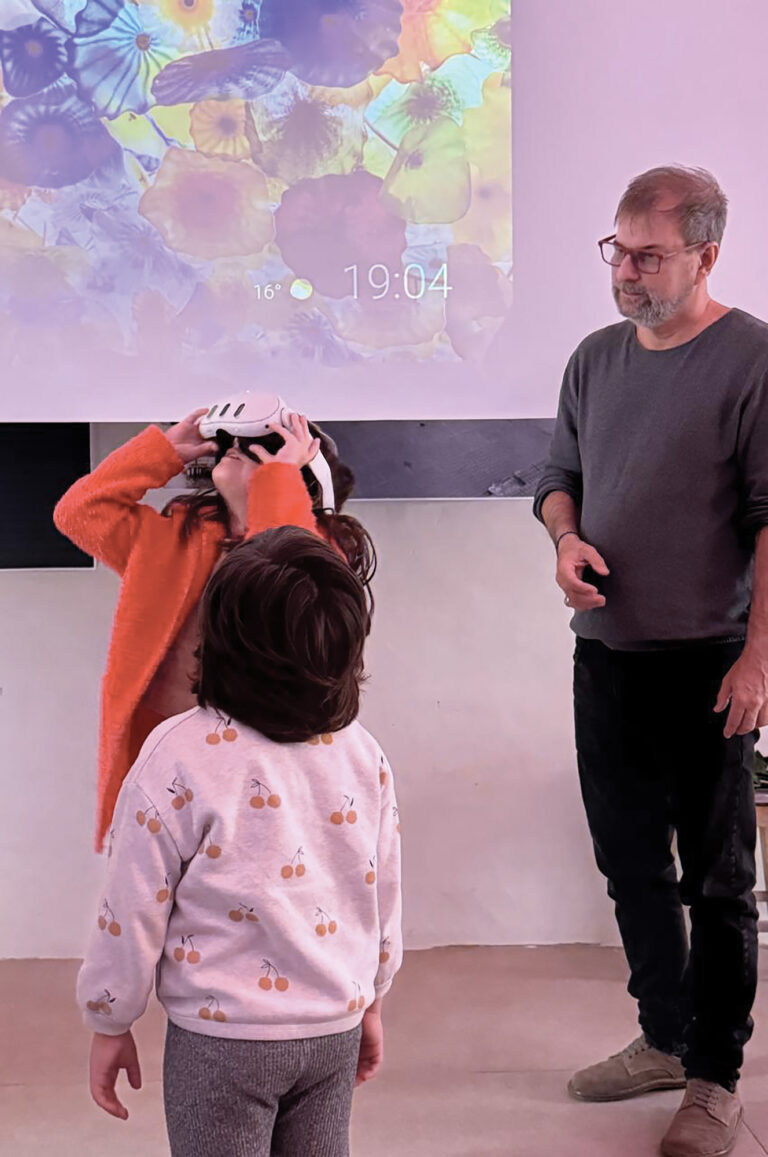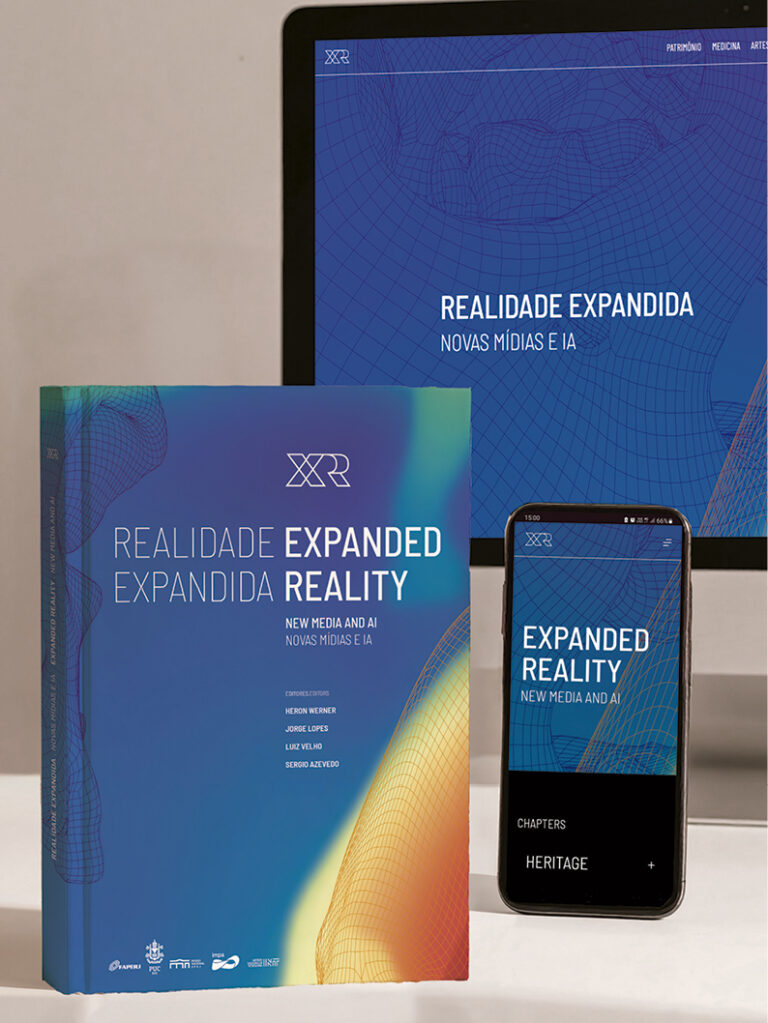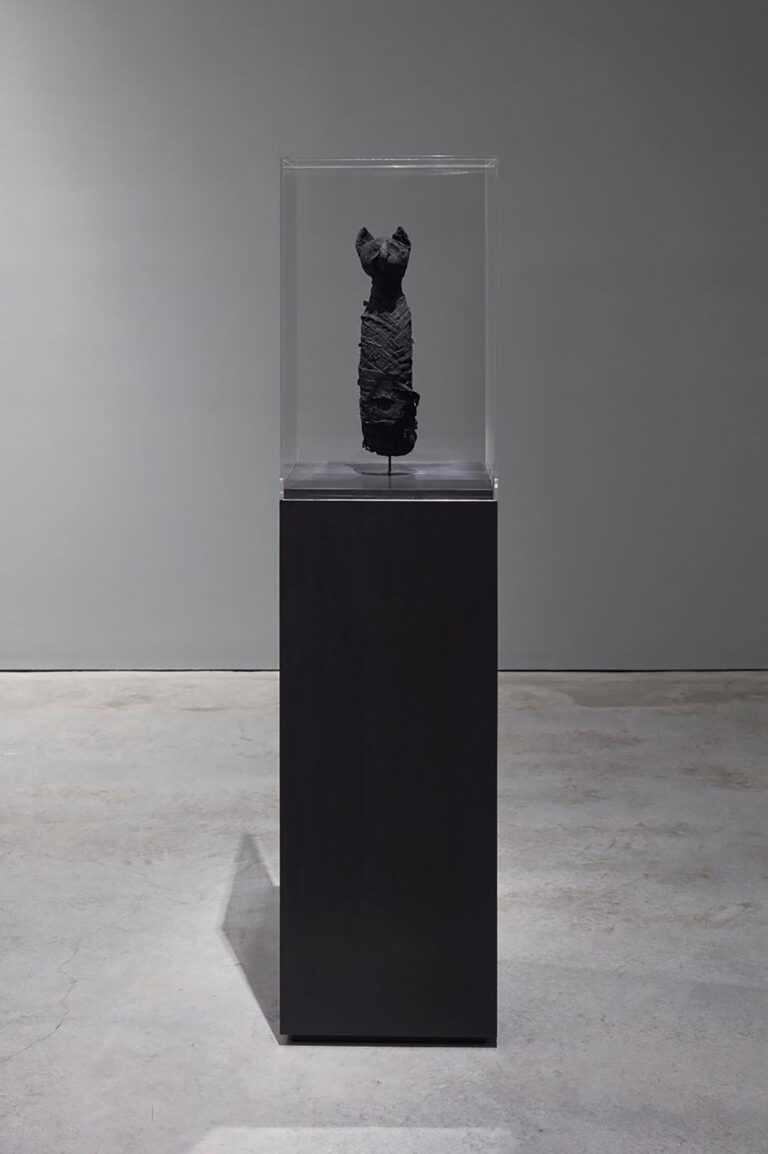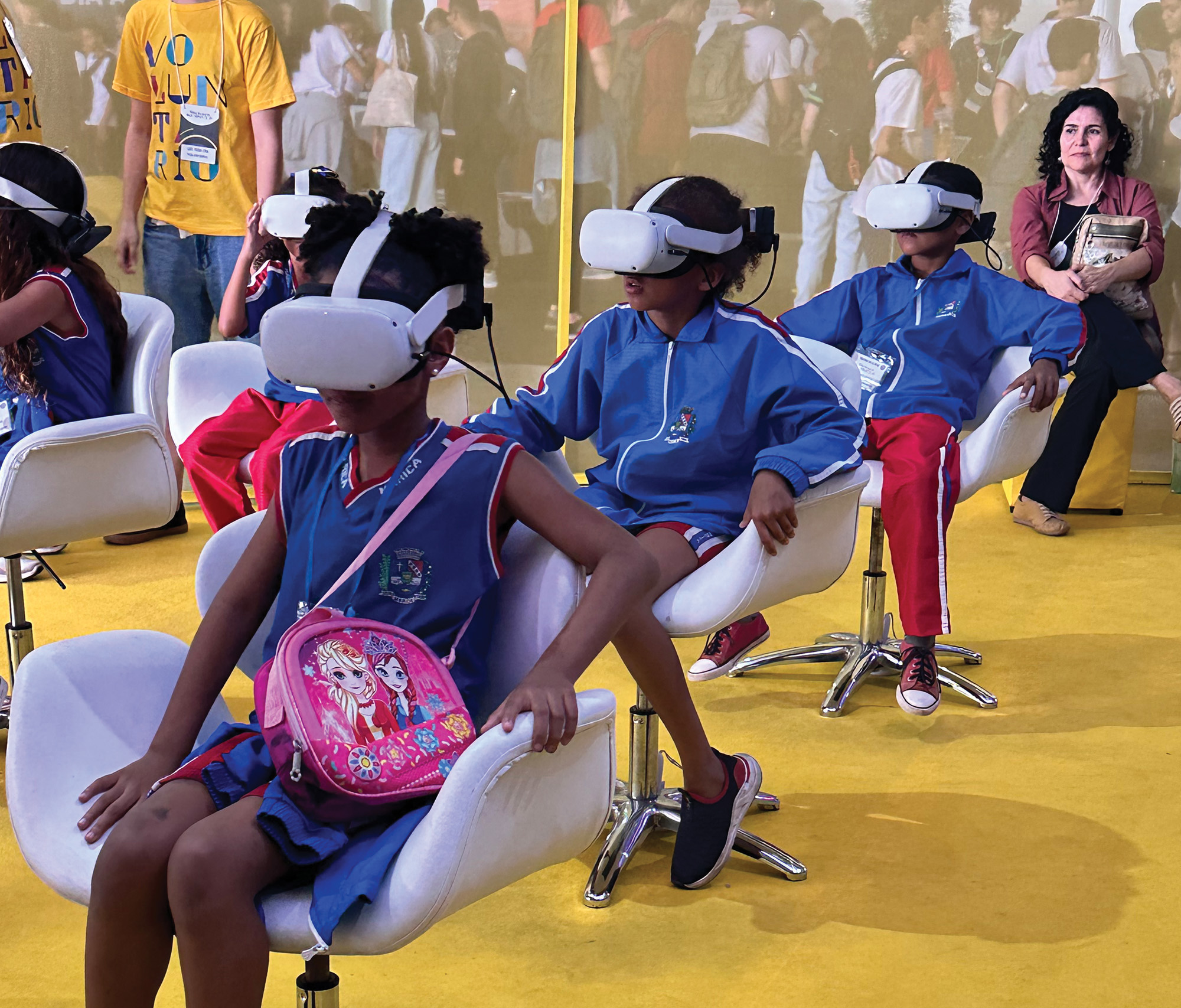
Following the model of the Virtual Reality experience presented in the V-HORUS project – a pioneering initiative developed by the Space-XR team (a group that brings together researchers from LAPID/National Museum/UFRJ, VISGRAF/IMPA, BIODESIGN/PUC-Rio and LAMOT/INT) and presented on several occasions and in different locations – other similar activities were designed to popularize the use of Virtual Reality (VR) headsets and disseminate the scientific and cultural content addressed in the research of the Digital Image Processing Laboratory (LAPID) of the National Museum/UFRJ. Several of these activities took place in collaboration with colleagues from the Space-XR group.
The first test of viewing environments in Virtual Reality took place in June 2022, in an activity linked to the event “22+100 Laban and the Modernist Project” (Figure 01). On this occasion, participants were presented with aspects of the Dance Space room available on the Spatial platform. This room presents in Virtual Reality information, videos, and photographs of the works of Rudolf Laban, Irmgard Bartenieff, and Helenita Sá Earp, exponents of the art of dance and movement.
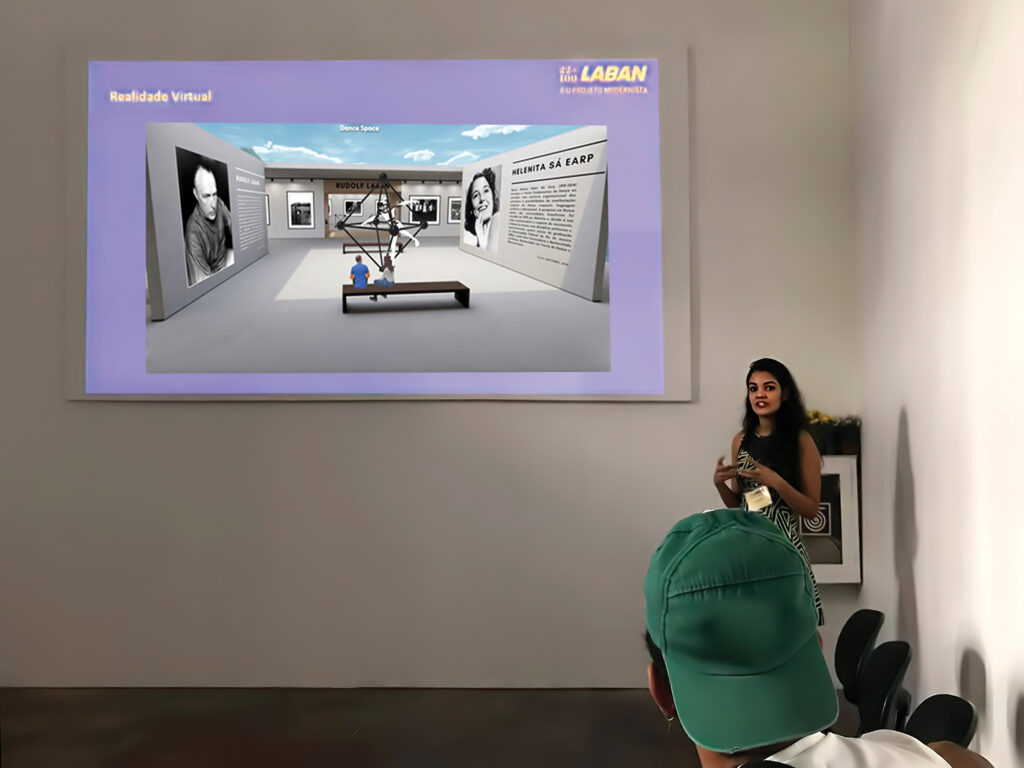
In October 2022, in parallel with the National Museum’s Historical Archaeology Week, our first VR Experience was held, following the format adopted for future experiences using VR mediation devices (Quest 2 headsets). During the three days of the event, participants had virtual access to an environment that reproduced the archaeological excavations carried out by the National Museum’s teams of archaeologists inside the Imperial Palace of São Cristóvão. The goal was to learn about the historical evolution of the building (Figure 02).
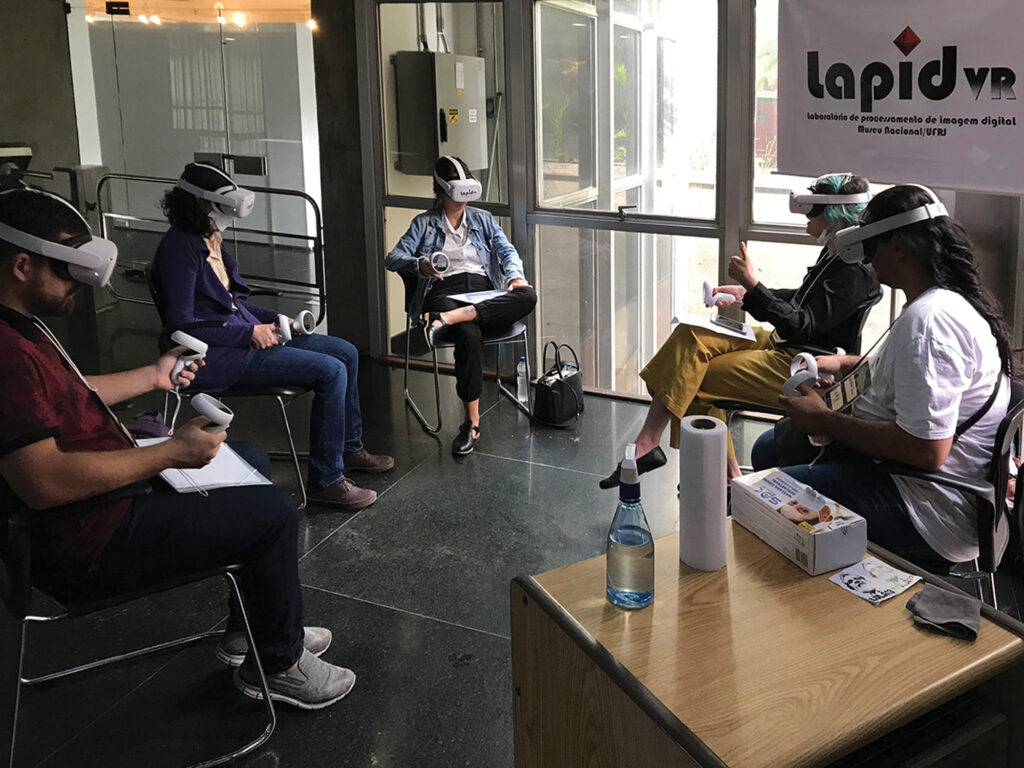
In November 2022, the LAPID team presented the VR Experience Archeoverso: Greek Ceramic Experience as an integral part of the discipline Ancient Greek Iconographic Analysis of the History Course at UFRJ. The activity (Figure 03) was developed in the temporary room of LAPID, still in the building attached to the main building of the Museum in Quinta da Boa Vista.
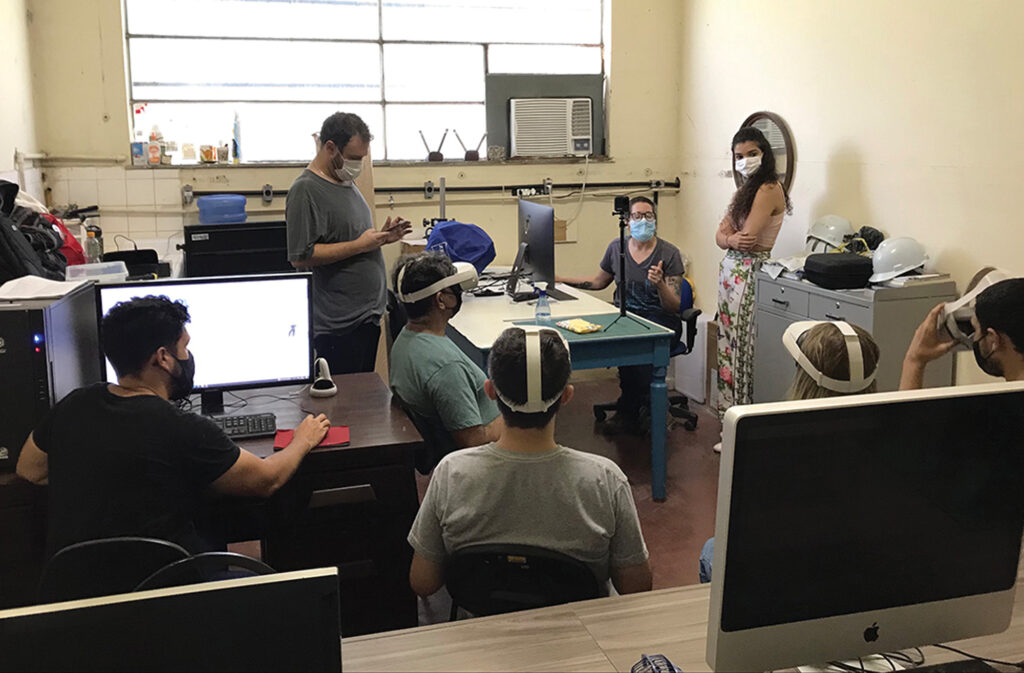
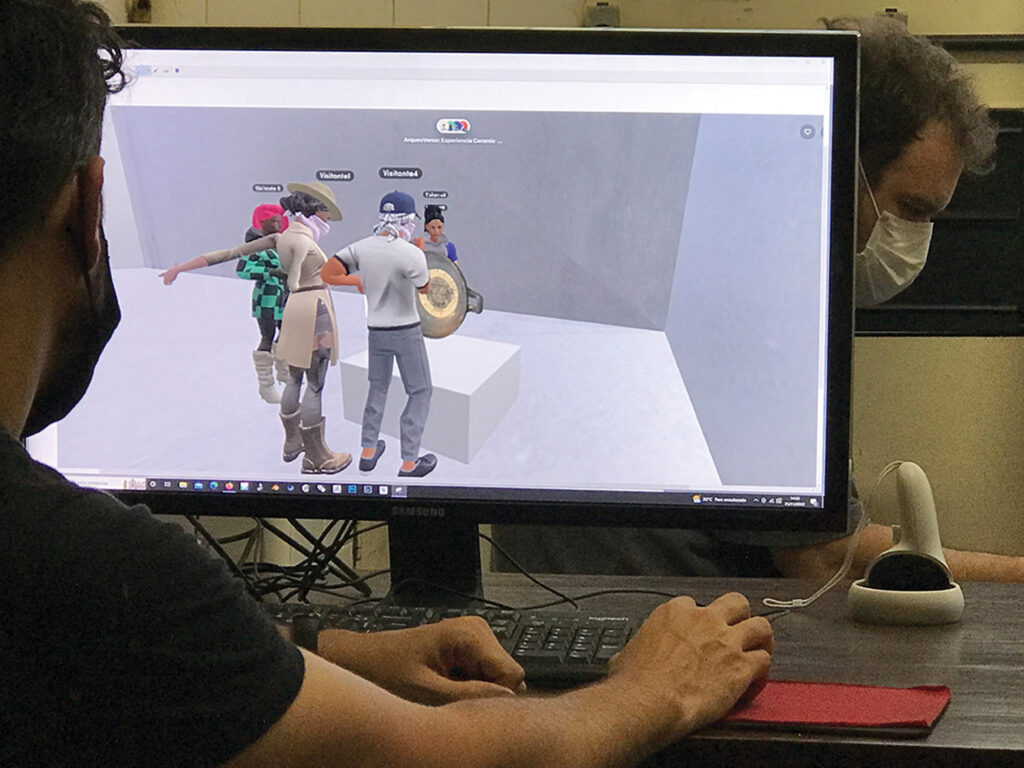
A third VR Experience, held in parallel with the 2nd Symposium on 3D Technologies at the Alta-Imagem Laboratory (RJ), was implemented in December 2022. This event presented advances in the metaverse in museology and medicine.
In the same month, a fourth VR Experience (Figure 04) was held in parallel with the PaleoRJ/ES 2022 event. This experience showcased Virtual Reality environments with a palaeontological theme, including a virtual visit to the Quaternary Megafauna of Bahia room on the Spatial platform.
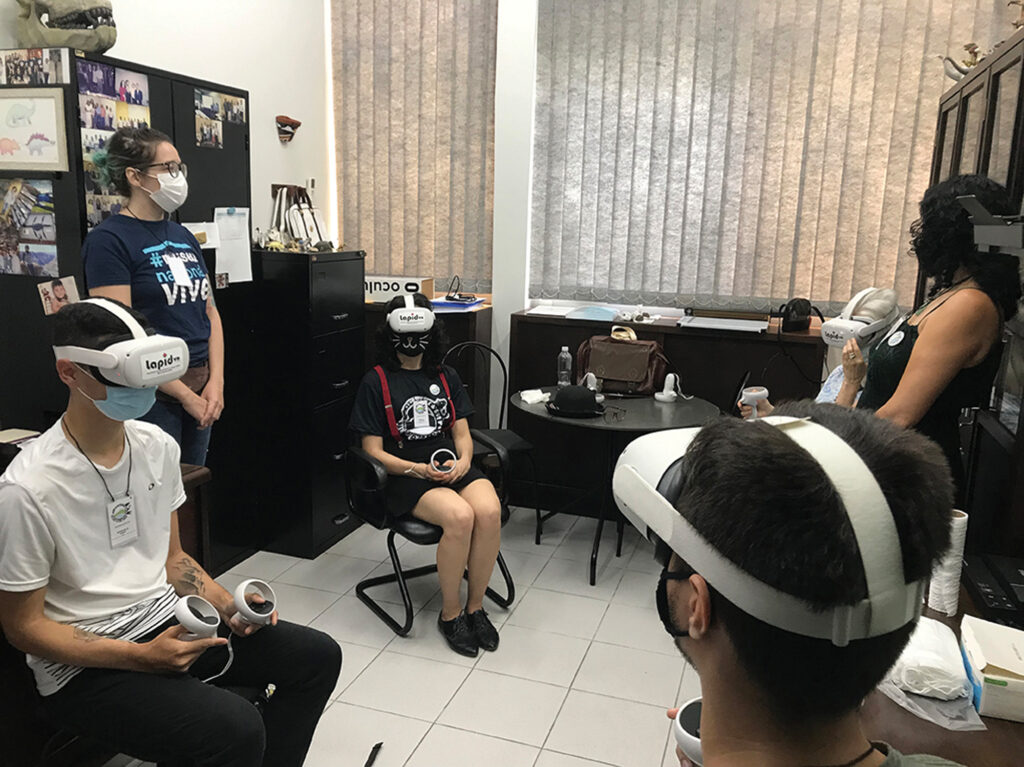
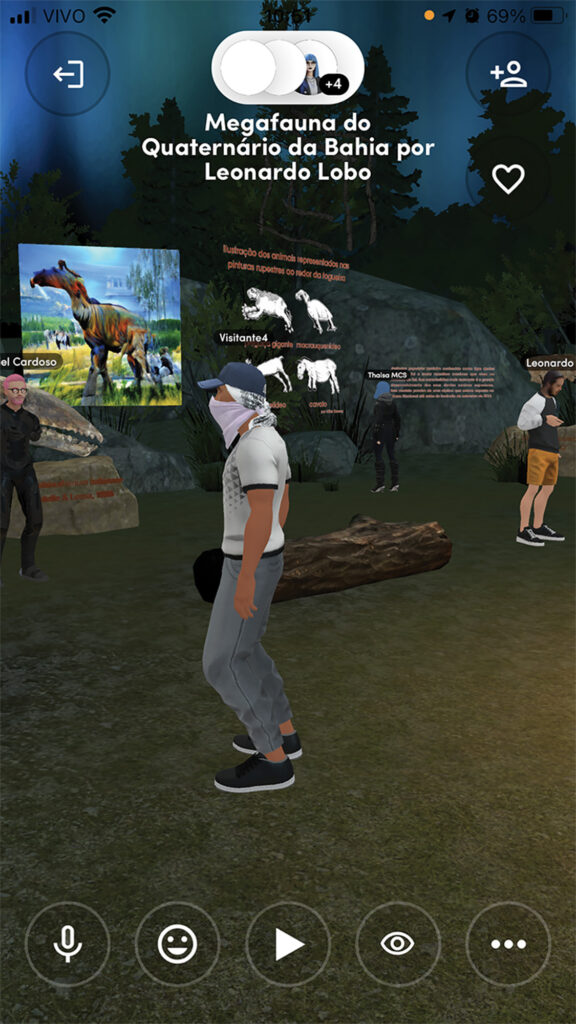
In April 2023, the Space-XR team participated in the organization of the Dance & Tech event, held at the Angel Vianna College, an important dance training centre in the city of Rio de Janeiro.
This event covered several topics related to dance and its interface with digital technologies, through artistic exhibitions and experiments, as well as round tables, such as: dialogue between dance and technology, digital technologies in dance creation, dance and motion capture, and dance in the metaverse. The VR Experience (Figure 05) presented, in a virtual environment, the progress of the Space-XR team’s research into motion capture (MoCap) integrated with virtual models (avatars).
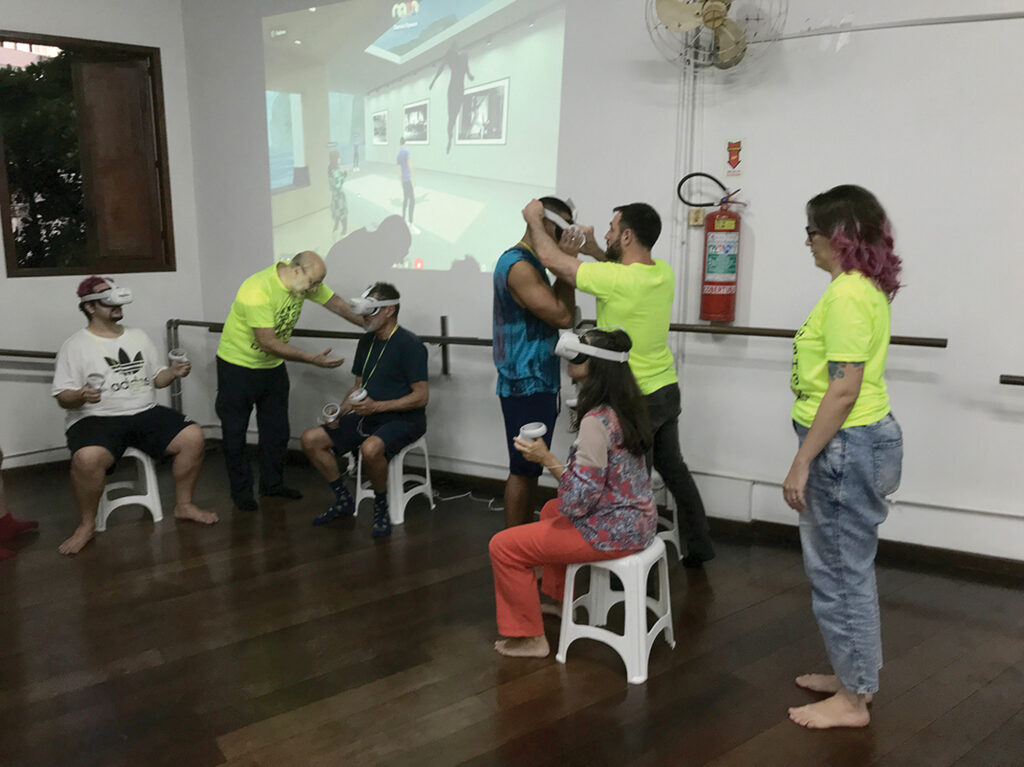
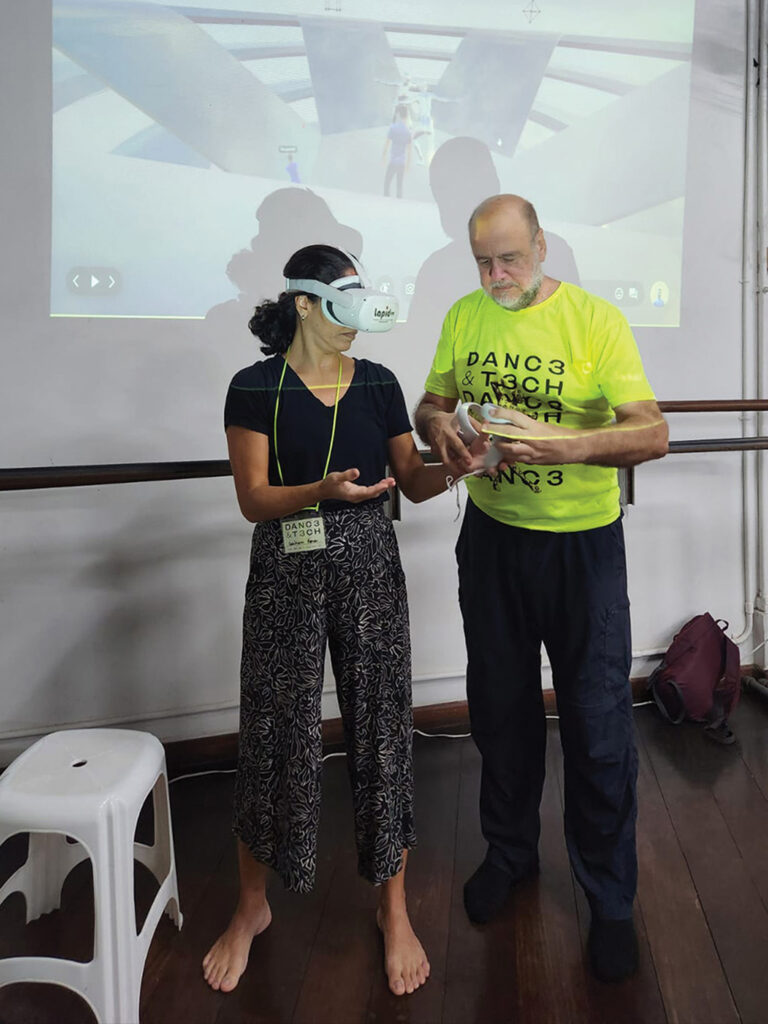
The success of the first edition of the Dance & Tech led to an invitation to hold a second edition at the Federal University of Rio Grande do Sul (UFRGS). Held in August 2023 (Figure 6), the event was conducted in a hybrid format (online and in-person) to extend the reach and interest of participants from other states. The event featured international guests such as Daiane Lopes and Weidong Yang, North American dancers and researchers, who came to Brazil to share their research. The central theme, Dance and Technology: Articulations in Power, was explored in round tables that discussed the links between dance, technology, health, memory, and interdisciplinarity.
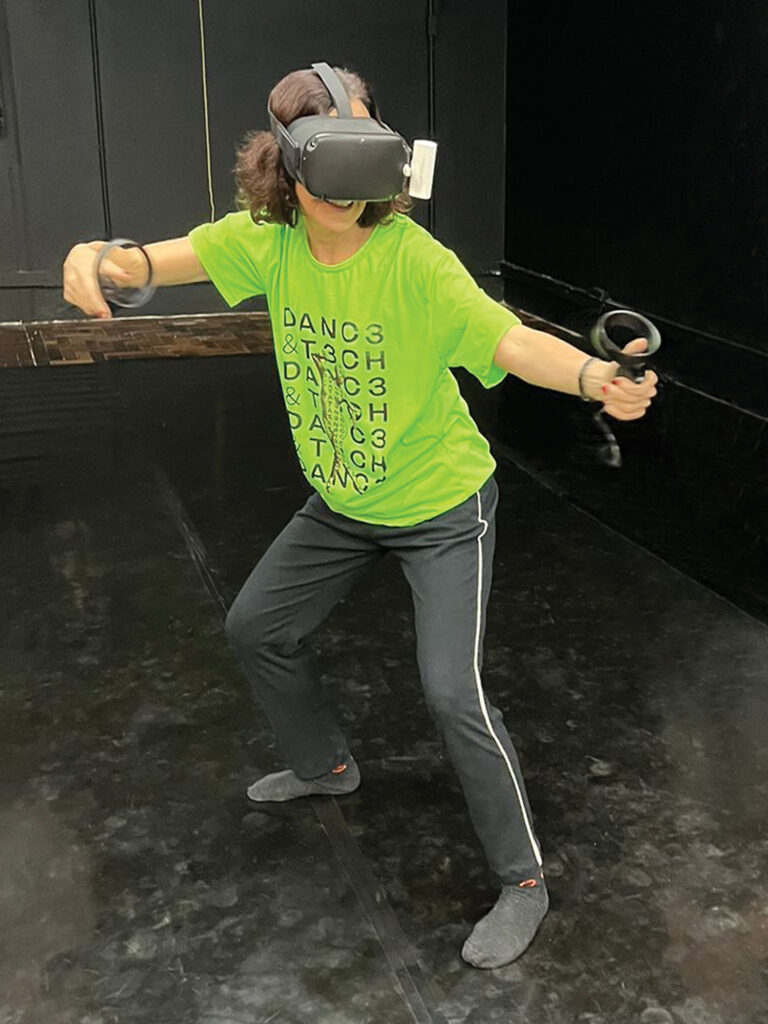
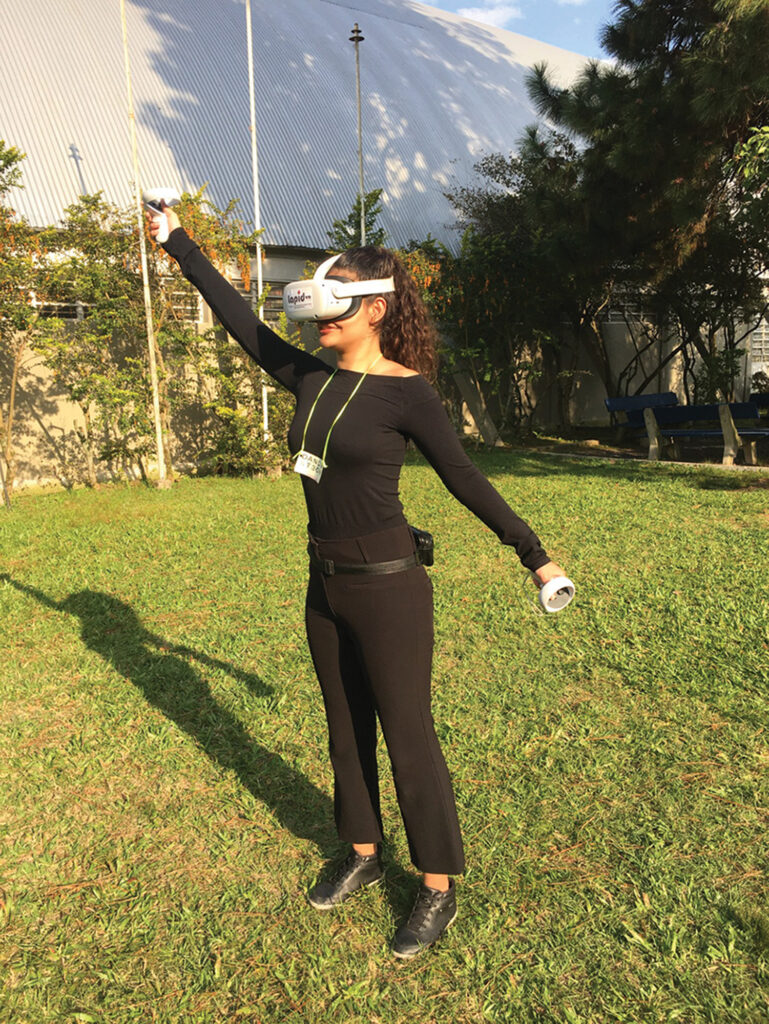
The year 2023 also marked the link between our Virtual Reality workshops and the “Meninas Com Ciência” project, an initiative of the National Museum aimed at familiarising school-age girls with female researchers and the scientific activities developed at the museum. This year, several experiences (Figure 07) were offered in conjunction with the editions of the project, always with the aim of showing these young girls the possibilities of disseminating science in a Virtual Reality environment.
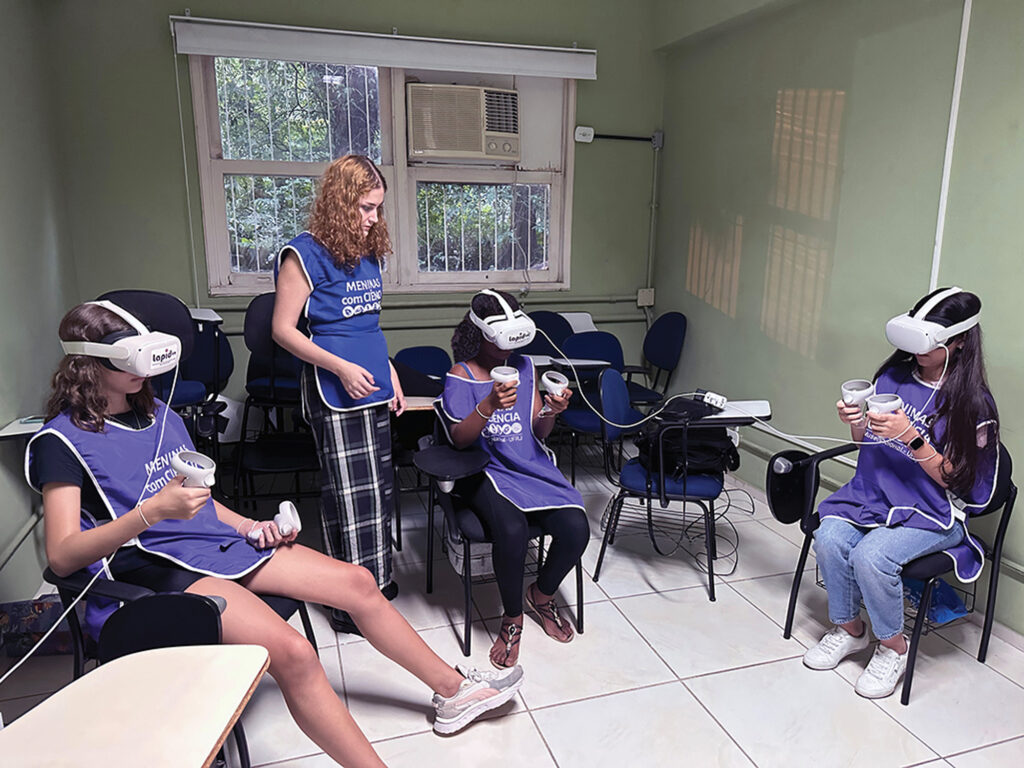
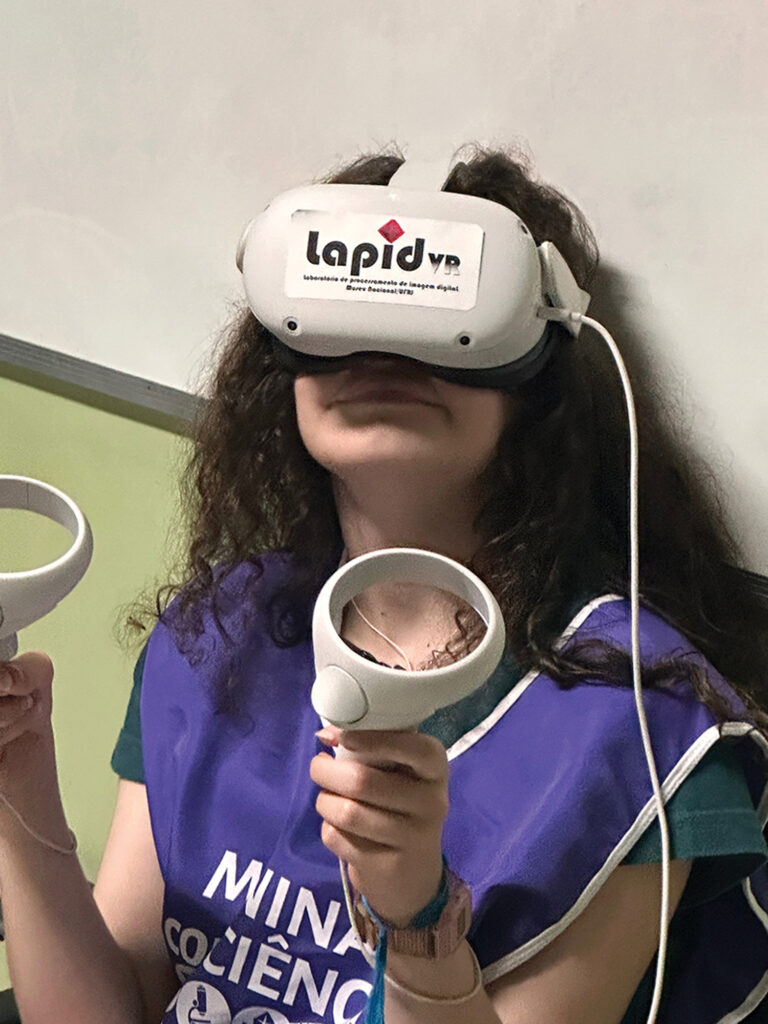
At the end of 2023, in parallel with the National Museum of Egyptology Week (SEMNA), an event in which LAPID and the Space-XR team have systematically participated in recent years, a VR Experience (Figure 08) was made available. It presented a 360-degree video demonstrating the participation of researchers from the National Museum/UFRJ in the Neferhotep project, which consists of the restoration of Theban Tomb 49 (TT-49) in Luxor, Egypt. This video, entitled Neferhotep 360, also the result of a collaboration with the SpaceXR team, became the subject of several other workshops held during the following year.
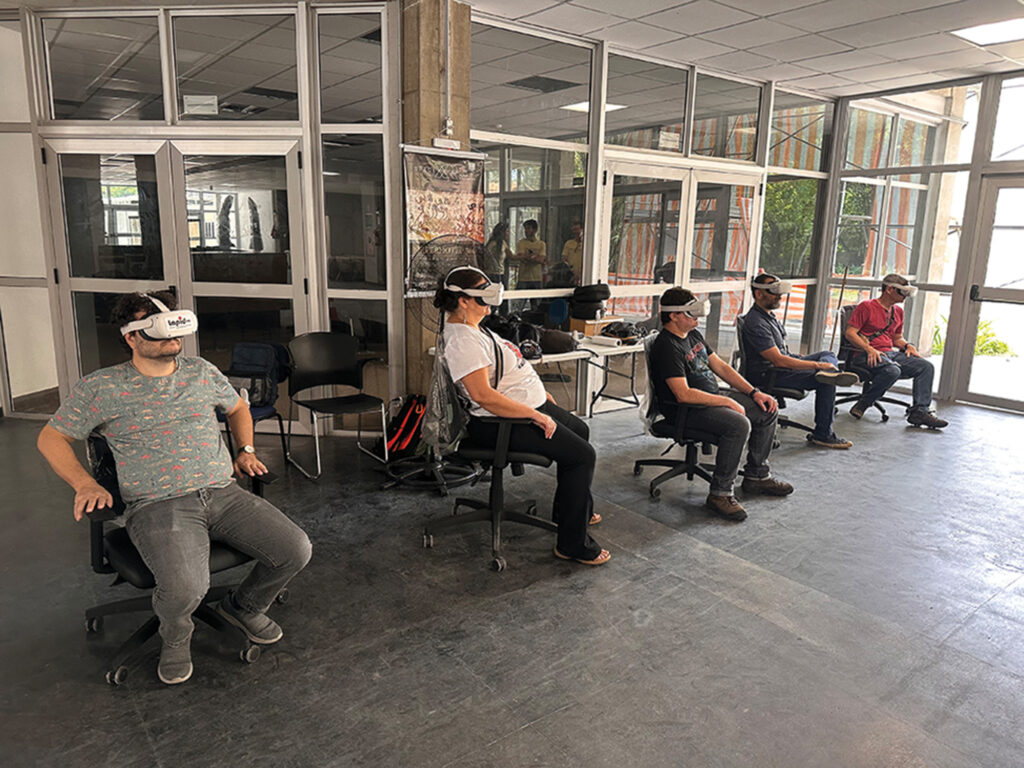
The beginning of 2024 was marked by our first workshop at an international event. On the occasion of the opening of Tomb TT-49 to the public, LAPID presented a VR Experience (Figure 09) in Luxor (Egypt), in February, allowing attendees to view the preliminary version of the Neferhotep 360 film.
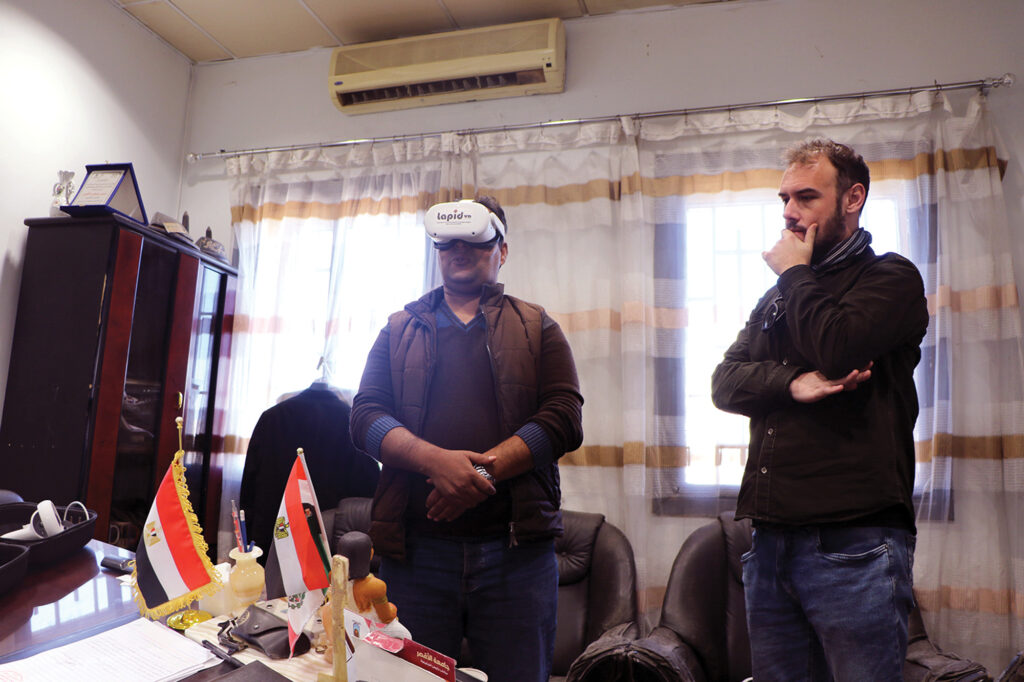
In July 2024, in collaboration with the Egyptology Laboratory of the National Museum (SESHAT), a VR Experience was held in parallel with the “Clube do Jovem Cientista do Museu Nacional” event (Figure 10). On this occasion, participants had the opportunity to watch the film “Neferhotep 360” through VR headsets.
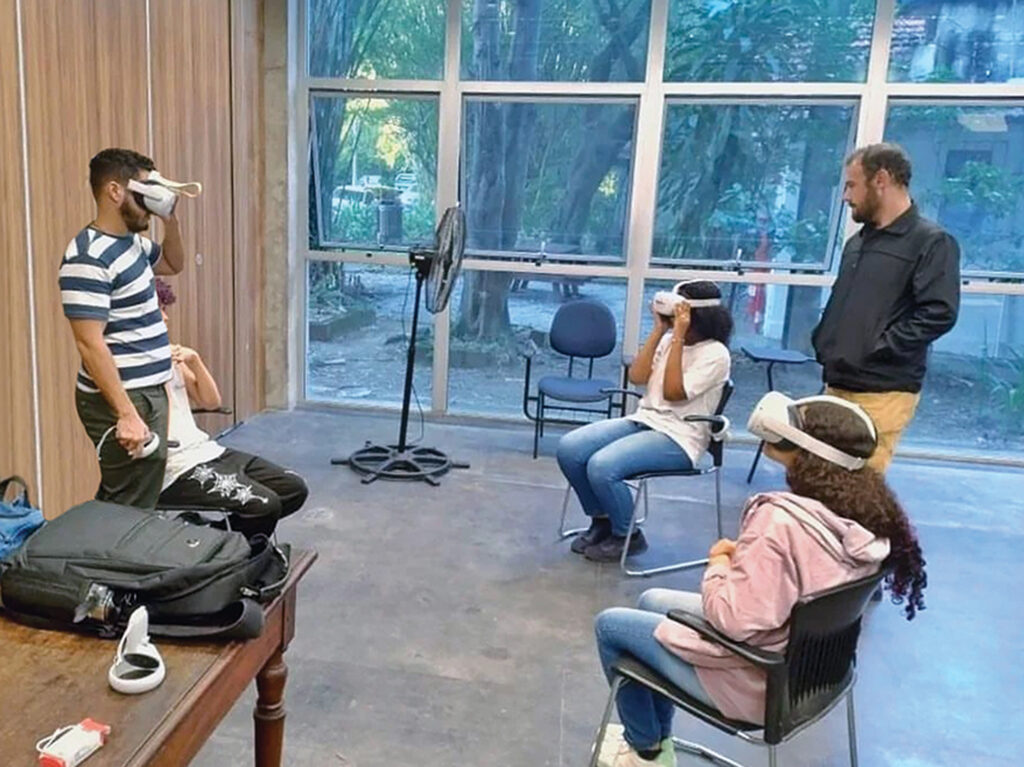
In August 2024, the “Meninas Com Ciência” project organised activities for girls from the communities of Maré and Mangueira, Rio de Janeiro. During these events, LAPID conducted several workshops related to its research in three-dimensional technologies and virtual environments, structured as follows:
In the first workshop, participants visited LAPID, where researchers from the laboratory presented activities such as three-dimensional digital scanning, digital modelling of 3D files, and physical prototyping (3D printing) of the scientific-cultural collection of the National Museum for availability in a virtual environment and support for scientific research and exhibitions (Figure 11). One of the examples presented was the process of digitization, modelling, and prototyping of the skeleton of the Triassic dinosaur Staurikosaurus pricei, to be used in future palaeontological exhibitions at the museum.
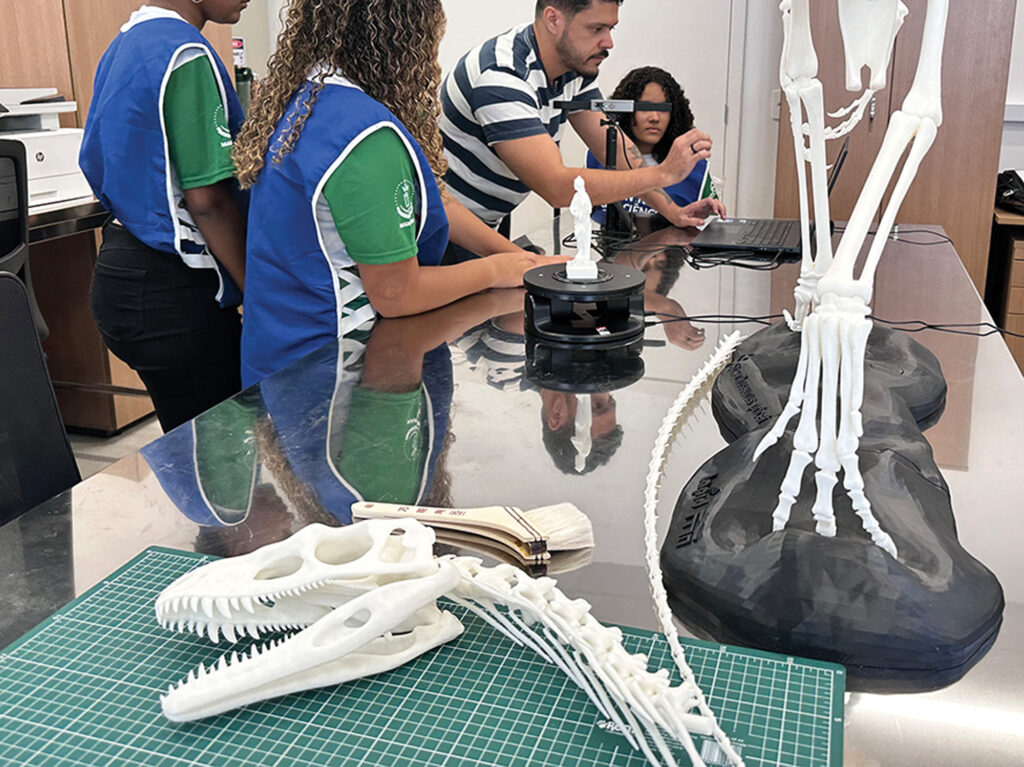
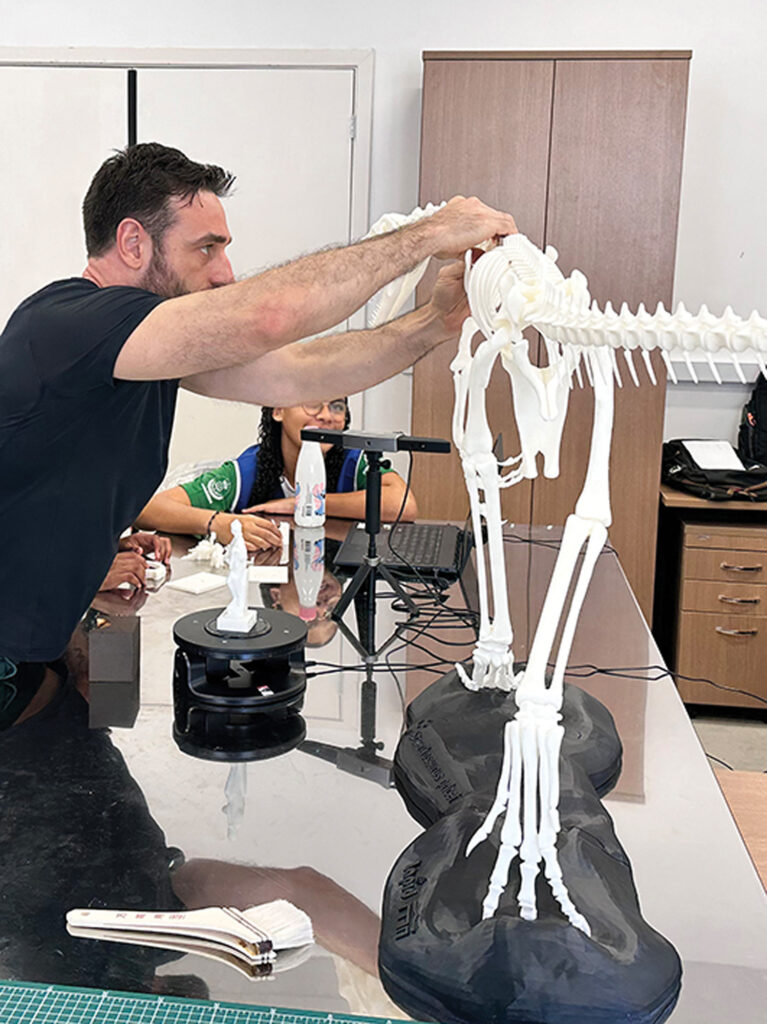
The second experience (Figure 12) was the presentation of the video “Neferhotep 360”, produced by the Space-XR group. The video shows the participation of researchers from the National Museum in the Neferhotep project, which consists of the restoration of Theban Tomb 49 (TT-49) in Luxor, Egypt. The experience once again involved the SESHAT group of researchers (a group dedicated to the study of ancient Egyptian culture at the National Museum).
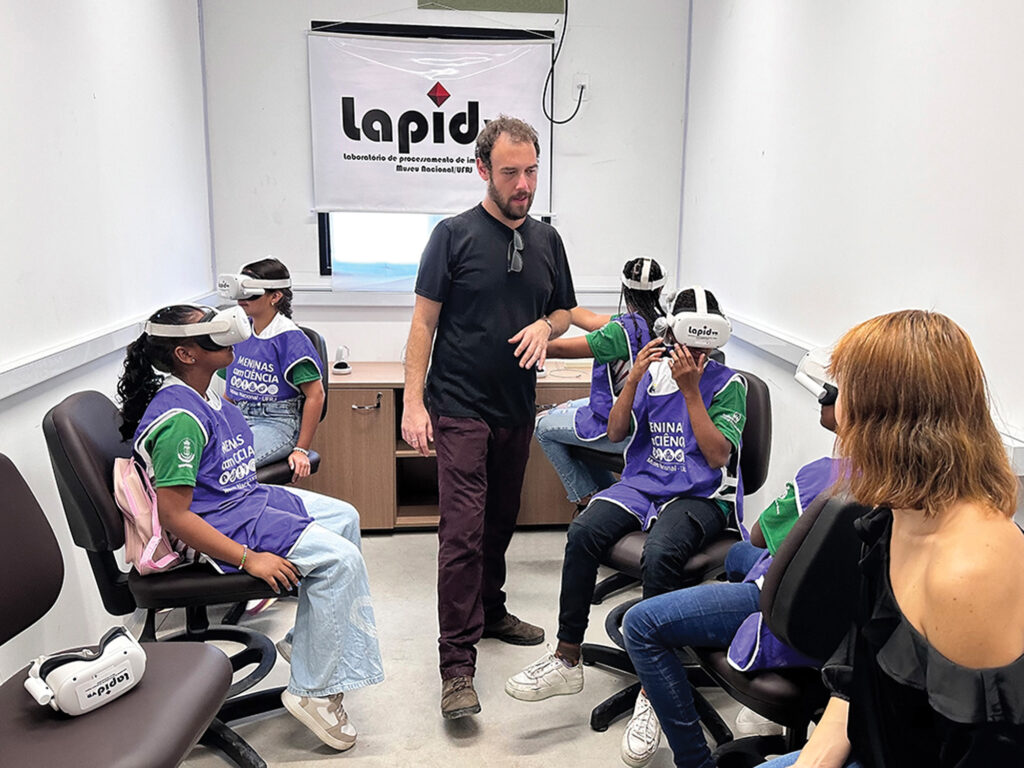
In September 2024, as an integrated activity of the “3rd National Mathematics Festival” (produced by IMPA/MCTI), an event aimed at students in the school system and the general public, the LAPID team was responsible for implementing another VR Experience.
This activity, officially called “Space-XR Expanded Reality Space”, was divided into two areas, the first of which (Figure 13) was designed to present the participants with a series of information related to the research carried out by the National Museum in Egypt, historical particularities of the ancient Egyptian civilization, and details of the production and presentation of the Virtual Reality video “Neferhotep 360”. Researchers from the National Museum also took the opportunity to clear up any doubts the public might have about the aspects of the experience. A three-dimensional impression of the room in the tomb that contains the statues of Neferhotep, his wife, and children was used as a support material for the visually impaired (Figure 14).
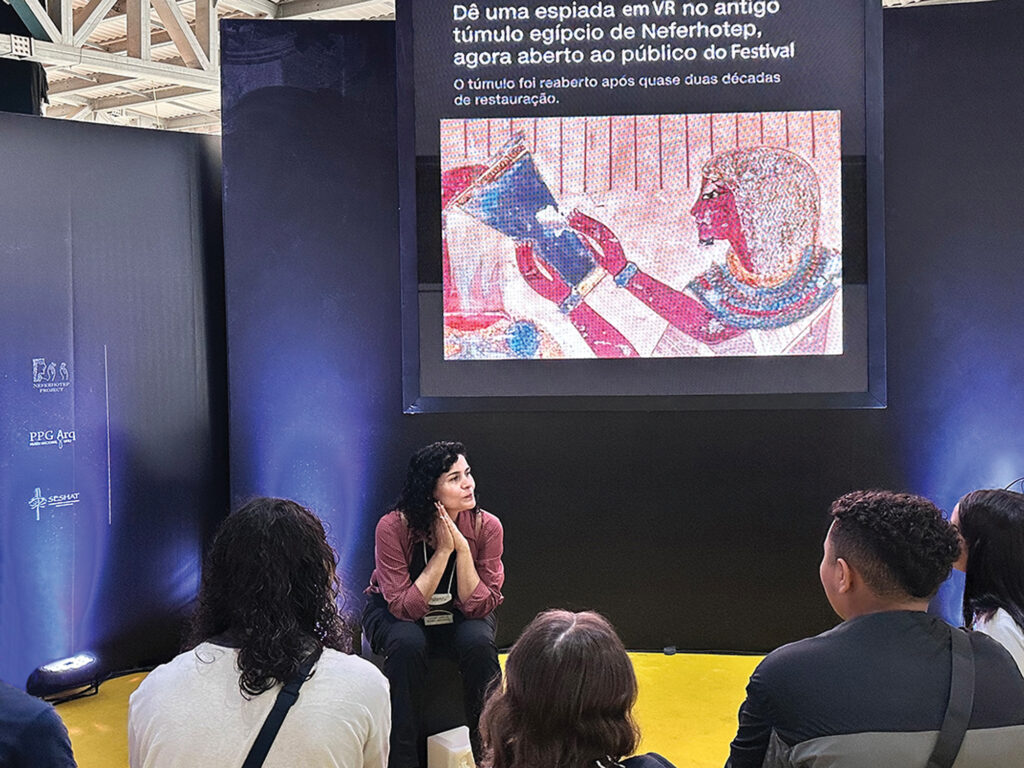
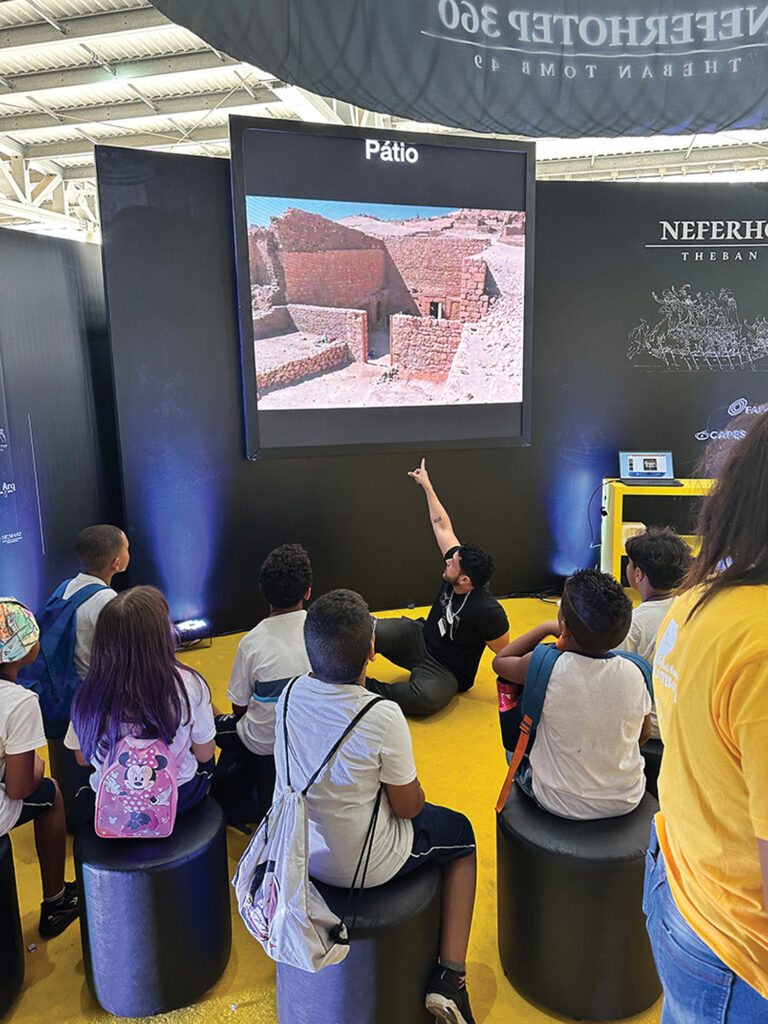
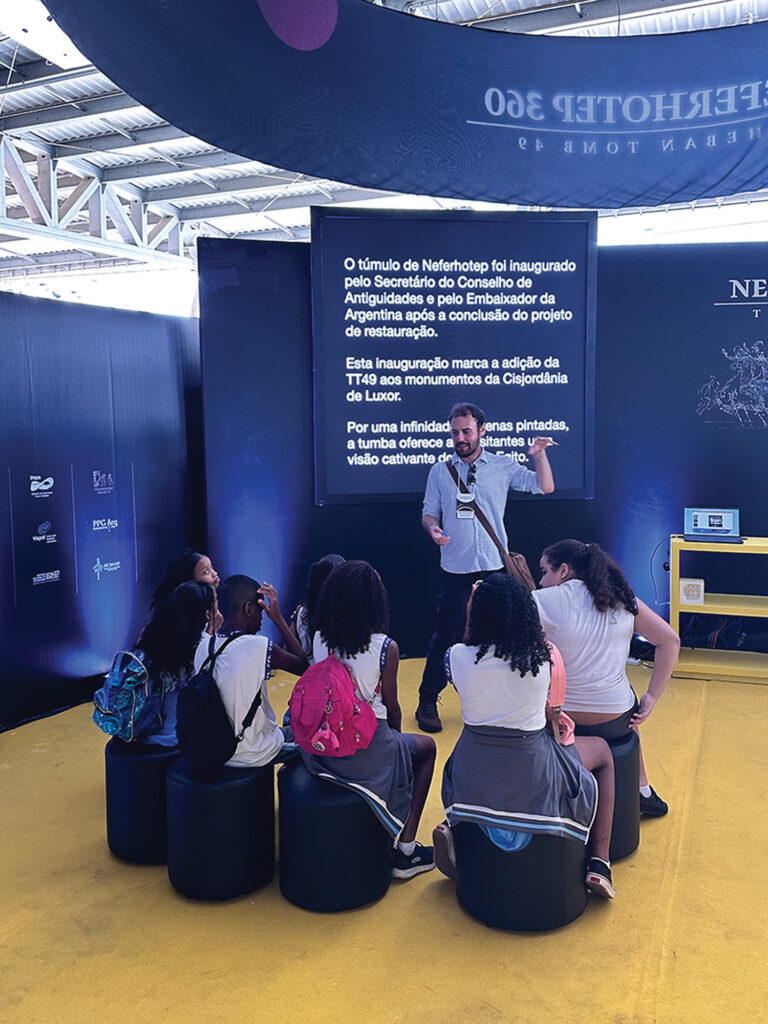
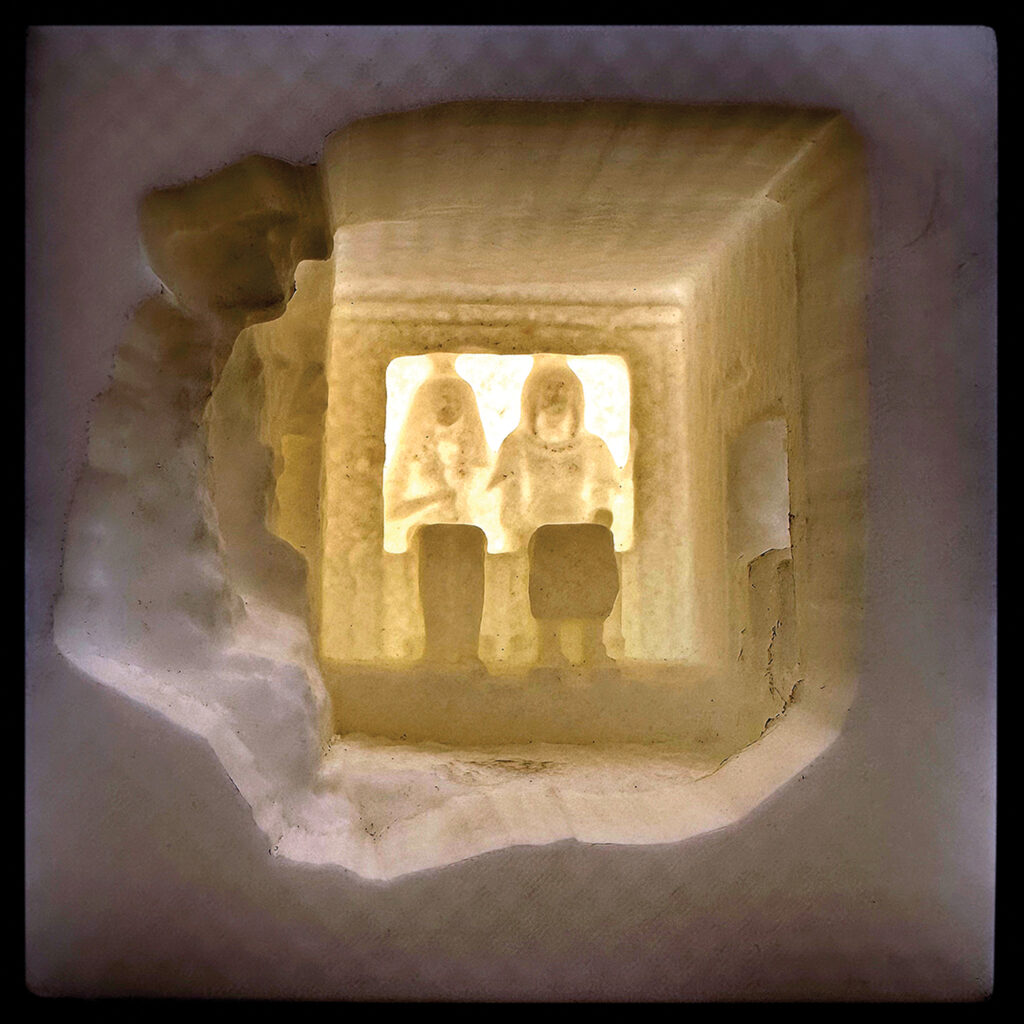
The second part (Figure 15) consisted of a presentation of the video “Neferhotep 360”, produced by the Space-XR group, using a virtual mediation device (Quest2 headsets). The video presents the work of researchers from the National Museum as part of the Neferhotep Project, which consists of the restoration of Theban Tomb 49 (TT-49) in Luxor, Egypt. The workshop was supported by technical staff hired by IMPA (the organizer of the event) and volunteers. It is also worth mentioning that, during the three days of the event, approximately 1,000 (one thousand) people participated in the experience.
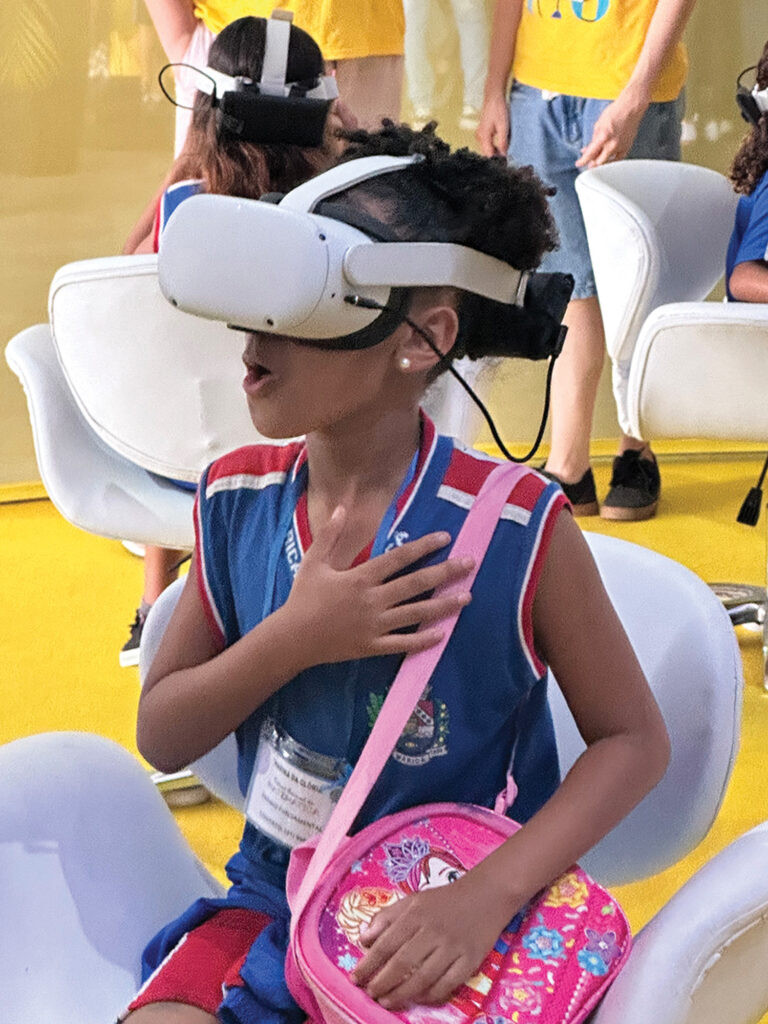
At the end of 2024, the Quest2 devices were also used as a complementary teaching activity in the course Advanced Three-Dimensional Methodologies (Figure 16), taught by Orlando Grillo in the Postgraduate Programme in Geopaleontological Heritage at the National Museum/UFRJ. On this occasion, the students were able to visit the virtual spaces created by the team on the Spatial platform and watch the “Neferhotep 360” video.
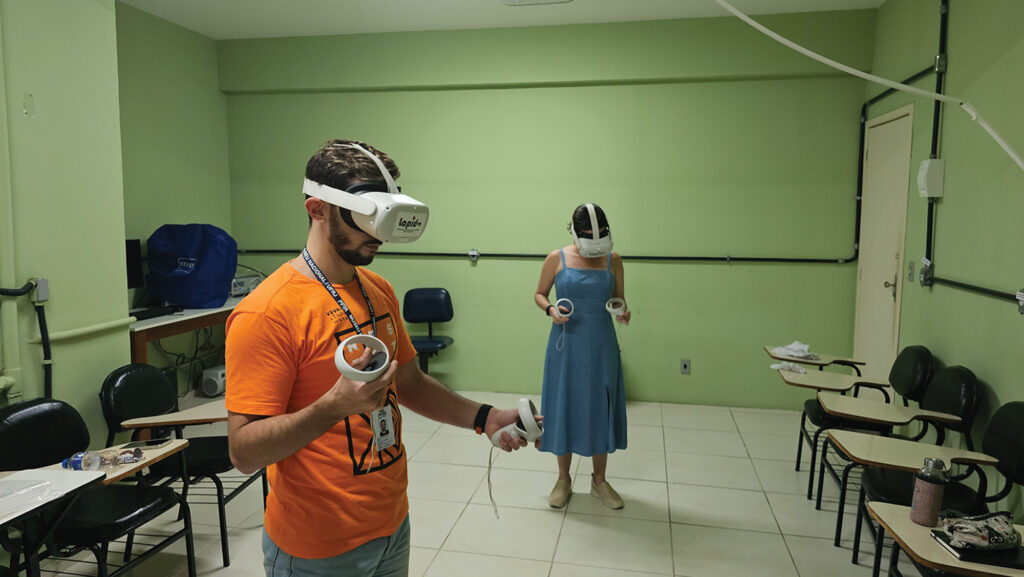
Finally, we present some considerations aimed at improving the development of similar experiences.
The main source of potential problems with this type of experience is the need for internet access to configure the equipment (Quest headsets) and access the VR environments on the Spatial platform. If a high quality, high speed signal is not available at the venue, the efficiency of the experience can be compromised. Throughout our events, we have seen a direct correlation between the quality of the internet signal and the fluidity of the presentation.
If the content is pre-recorded on the device, such as 360 films (e.g. Neferhotep 360), this factor is reduced, but the pre-configuration of the Quest devices still requires an internet connection. In the case of presentations with pre-recorded material, it would be very useful to have a programme that allows to control and synchronise all the devices so that they present the video simultaneously, improving the time of each session and avoiding extra time due to delays in the start of some devices.
The provision of additional equipment has proved to be of great value, both for the eventual replacement of faulty equipment and for the introduction of additional visitors with special needs. For example, people in wheelchairs needed to use the equipment in these, so the Quests devices had to be adjusted to work outside the pre-defined radius for the chairs.
Special attention had to be paid to the durability of the batteries, both internal and external, and to the normal heating of the equipment due to continuous use, to avoid the need to interrupt presentations or replace overheated equipment.
For experiences with a large number of participants, it is recommended that the films to be shown have a maximum duration of 5 minutes to allow more people to participate in the experience and/or to reduce queuing time.
The use of VR equipment can, in some cases, cause discomfort to the user, such as dizziness, nausea, eye irritation, or headaches. These symptoms are currently known as ‘cybersickness’ or ‘motion sickness’. In the workshops conducted by our team, these events were present but rare (around 5% of users). However, it is important to note that the incidence may be higher if the audience has had no previous contact with the device.
Still regarding the health and comfort aspect, it is important to maintain a device hygiene protocol, cleaning the internal parts and those in contact with the face after each use. This practice was adopted in all the workshops and presentations we conducted, especially considering that the described activities began during the COVID-19 pandemic.
The Quest 2 device proved to be an excellent tool for conducting the workshops, especially considering its practicality and moderate cost. It is clear that as the technology of this type of device develops, other options may be considered.
Conclusion
After running several Virtual Reality workshops in different locations, with different types of audiences and on different topics, it was possible to conclude that:
#01 – Scientific and cultural topics are of great interest to students and the general public, and realistic vizualisation tools such as VR headsets are strong allies in the dissemination and popularization of these topics;
#02 – The use of Virtual Reality mediation devices (VR headsets) is becoming more familiar to the public, especially the younger generation, who are well accustomed to recent technological developments. However, it is still essential to have qualified people present to help with the placement of the equipment and provide basic information on how to use the equipment for proper navigation in the metaverse;
#03 – It is necessary to consider the socio-economic factor, as it is possible to observe a greater affinity for the use of VR tools by those who belong to more privileged socio-economic classes. It is expected that more and more members of the less privileged classes will have greater access to this type of technology, both through the implementation of government inclusion programmes and through opportunities to improve their socio-economic conditions;
#04 – The VR workshops were a great success and were well received by all participants;
#05 – All potential problems that arose during the presentations were adequately resolved by the team, even if this required adaptations to the original proposal, which was only possible due to the qualifications of the development team;
#06 – The recruitment of a support team and the presence of volunteers is extremely important, especially for events with a large audience. However, it is important to emphasise that the permanent presence of the research team is necessary to supervise and coordinate the process, clarify any doubts about the research, and promote contact between the public and the research agents. This gives the activity more credibility, as these activities are not only recreational but also scientific in nature;
#07 – All those involved in the experiences reported here consider it essential to continue the activities, present new activities, and improve the experiences in order to provide qualified information on the scientific, historical, and cultural heritage that is the object of study of the research teams of the National Museum/UFRJ. •
